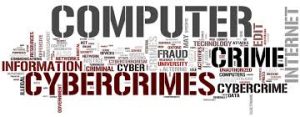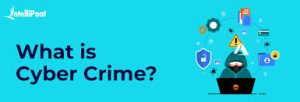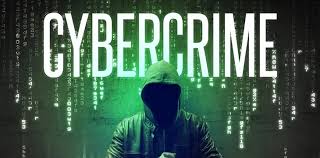cyber crimes
cyber crimes

cyber crimes Cybercrime refers to any criminal activity that involves computers, networks, or digital devices. It can target individuals, companies, or governments, and is often carried out to steal data, money, or disrupt operations.
🔍 Simple Definition:
Cybercrime is a crime that is committed using the internet, computers, or digital technology.
💻 Types of Cybercrime: cyber crime
| Type | Description |
| Hacking | Unauthorized access to computers or networks. |
| Phishing | Tricking people into giving sensitive info (e.g., passwords, credit card numbers) via fake emails or websites. |
| Identity Theft | Stealing someone’s personal info to impersonate them. |
| Online Fraud | Scams involving online shopping, fake job offers, lottery fraud, etc. |
| Cyberbullying | Harassing someone using digital platforms (social media, messaging apps). |
| Data Breach | Unauthorized access or leak of confidential data. |
| Child Exploitation | Distribution or possession of illegal content involving minors. |
| Denial-of-Service (DoS) Attacks | Overloading systems or websites to make them crash. |
cyber crime
 ⚠️ Examples: cyber crime
⚠️ Examples: cyber crime
- Someone sending a fake email pretending to be from your bank to get your login info.
- A person threatening others through social media.
🛡️ How to Stay Safe: cyber crimehttps://hyderabadpolice.gov.in/cyber_crimes_hyderabad_police_station.html
- Use strong, unique passwords.
- Don’t click on suspicious links.
- Keep software and antivirus up to date.
Yes, the 1930 helpline number in India is active and functional. It is the official national cybercrime helpline.

📞 What is 1930? cyber crime
1930 is the cybercrime helpline number launched by the Indian government (Ministry of Home Affairs) for reporting:
- Online financial frauds
- Scams
- Phishing
- UPI frauds
- Credit/debit card frauds
🛑 When to Call 1930: cyber crimehttps://cybervolunteer.mha.gov.in/webform/Volunteer_AuthoLogin.aspx
- If money has been fraudulently deducted from your bank account.
- If you shared OTPs or passwords by mistake due to a scam.
Cybercrimes come in many forms, depending on the target, intention, and method used. Here’s a breakdown of the main types of cybercrimes, categorized for better understanding: -
🔐 1. Cybercrimes Against Individuals cyber crime
- These target a person’s identity, privacy, or safety.
| Type | Description |
| Phishing | Fake emails or websites used to steal login credentials or personal info. |
| Identity Theft | Stealing personal information to impersonate someone (e.g., for loans, SIM cards). |
| Cyberstalking | Repeated online harassment or threats. |
| Cyberbullying | Sending harmful or threatening messages, especially among teenagers. |
| Online Defamation | Spreading false information to damage someone’s reputation. |
| Email Spoofing | Sending emails with a fake sender address to mislead the recipient. |

-
💼 2. Cybercrimes Against Organizations or Businesses cyber crime
- These disrupt operations or steal sensitive business data.
| Type | Description |
| Hacking | Unauthorized access to systems, often to steal or alter data. |
| Ransomware Attacks | Malware that locks systems or files until ransom is paid. |
| Data Breaches | Leaking or stealing confidential data (e.g., customer info, trade secrets). |
| Corporate Espionage | Spying on companies to steal strategies or technologies. |
-
💰 3. Cybercrimes Related to Financial Fraud
- These involve stealing money using digital platforms.
| Type | Description |
| Online Banking Fraud | Unauthorized access to bank accounts. |
| UPI Fraud | Tricking people into sending money via UPI apps (like Google Pay, PhonePe). |
| Credit/Debit Card Fraud | Stealing or cloning card info to make purchases. |
| Online Shopping Scams | Fake e-commerce websites that take money but don’t deliver products. |
| Investment or Job Scams | Fake offers for jobs, loans, or investments to cheat people. |
-
🏛️ 4. Cybercrimes Against Government or Public Infrastructure
- These are often political, ideological, or terror-driven.
| Type | Description |
| Cyber Terrorism | Attacks on critical infrastructure (e.g., power, water, defense). |
| Website Defacement | Hacking and altering government or public websites. |
| Espionage (Cyber Spying) | Stealing classified information from government servers. |
-
📸 5. Cybercrimes Involving Illegal Content
- These involve creating or sharing content that is prohibited by law.
| Type | Description |
| Child Pornography | Sharing, storing, or creating sexual content involving minors. |
| Dark Web Crimes | Trading illegal goods or services like drugs, weapons, etc. |
| Piracy | Illegal downloading/distribution of movies, software, or music. |
| Hate Speech or Terror Propaganda | Sharing content that incites violence or terrorism. |
| Category | Examples |
| Against Individuals | Phishing, Cyberbullying, Identity Theft |
| Against Businesses | Ransomware, Data Breach, Hacking |
| Financial Fraud | UPI Scam, Credit Card Theft, Fake Shopping Sites |
| Government Attacks | Cyber Terrorism, Website Defacement |
| Illegal Content | Pornography, Piracy, Hate Speech |
